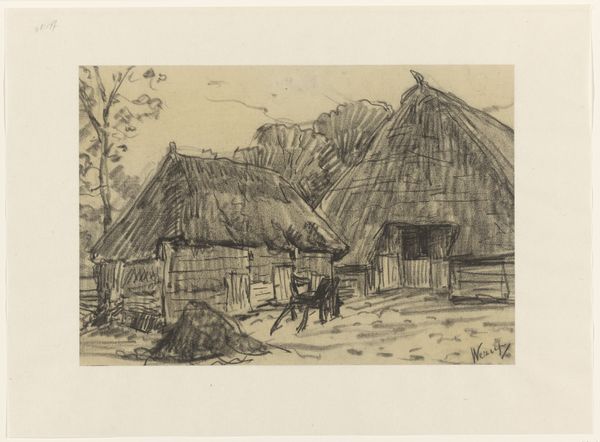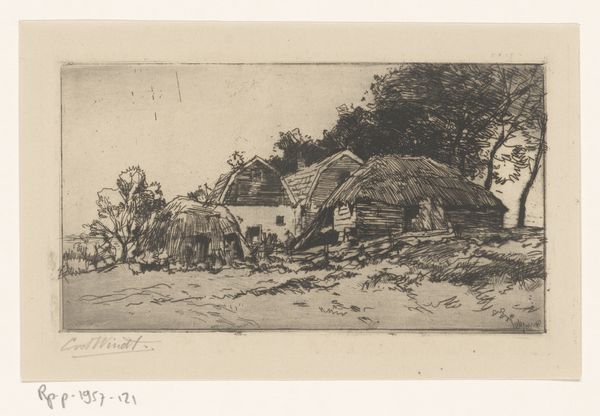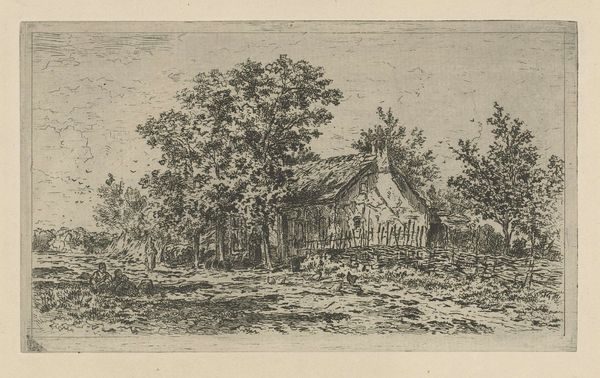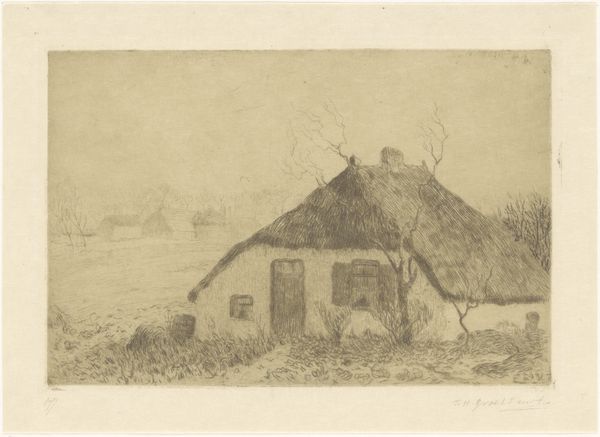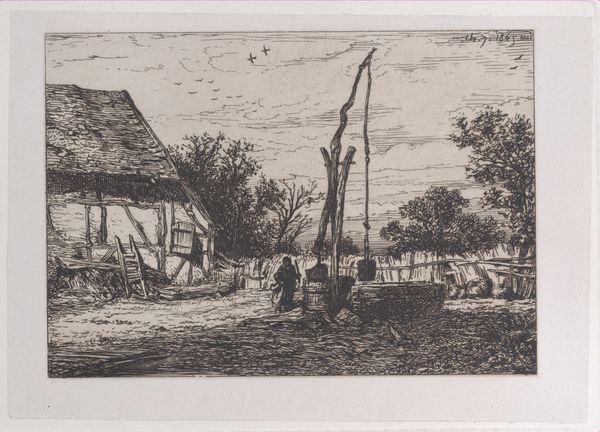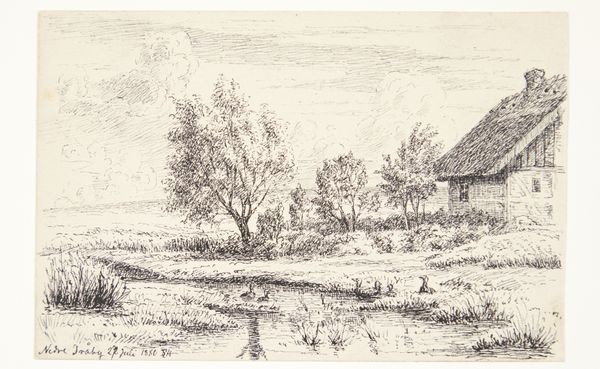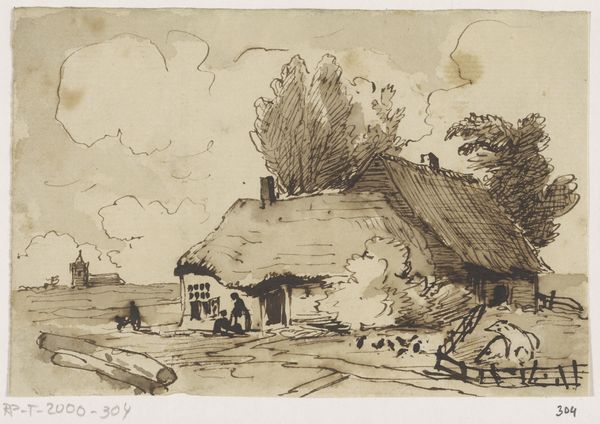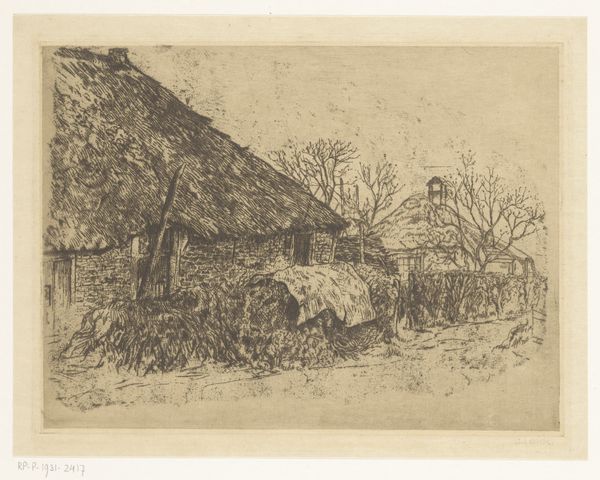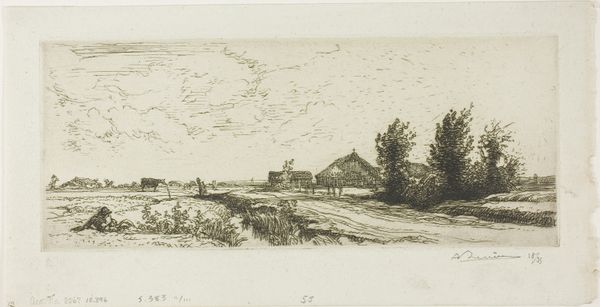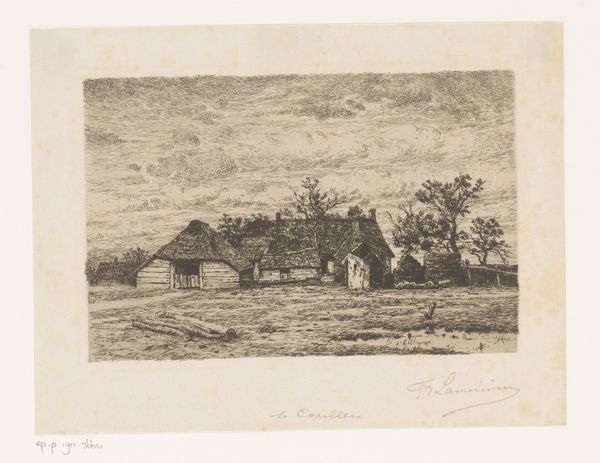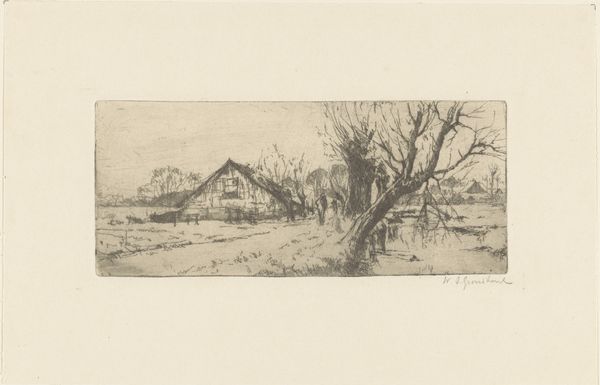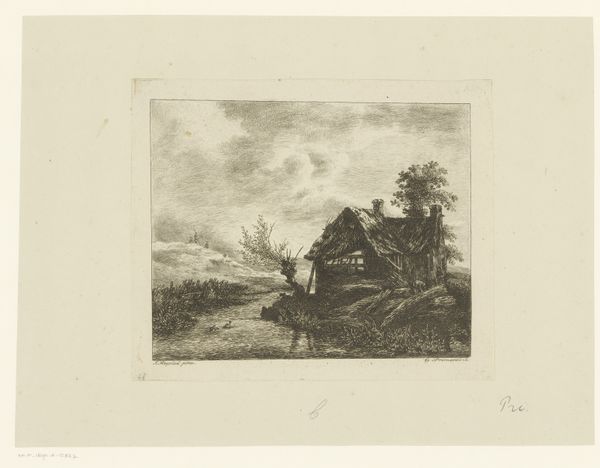
Dimensions: 124 × 173 mm (image); 131 × 180 mm (plate); 182 × 253 mm (sheet)
Copyright: Public Domain
Curator: This is "The Shower," an etching by Auguste-Louis Lepère, created in 1909. Look closely; it’s currently held here at The Art Institute of Chicago. Editor: My immediate impression is one of quiet intimacy. It's a scene brimming with subtle activity yet rendered with such delicacy—the scratchy lines that capture rain give such lovely texture and make everything feel enveloped and present. Curator: Absolutely, and as an etching, its creation demanded a specific sequence of labour. Consider the copper plate, the acid baths, the precise application of the etching needle. Each stage relies on very hands-on traditional skills of a printmaker to make multiple editions of this very evocative landscape. The method echoes the life he portrays in that sense of unhurried labour. Editor: Indeed. That woman, figure to the left, holding her child. There’s something very enduring about the visual vocabulary at play. Motherhood, home, community are age old, and feel essential in this portrayal, a protective force against the elements. Notice how the rain seems to cascade around the figures as if it’s an aura? Curator: Lepère worked en plein air to capture this scene, a process influenced by the Impressionists' emphasis on fleeting moments and direct observation. It’s about experiencing the labour of creating the work, but also how everyday tasks and daily routines intertwine with elements like a downpour to influence labor and production. Editor: I agree, and look how he positions that thatched-roof cottage. It's almost archetypal, embodying the idea of shelter, of a return to simpler times. It serves almost as a vessel for the spirit of "home". Curator: Which begs questions of ownership, property, who gets to own that image of simplicity—an especially poignant thing to consider when thinking about how such a work ends up on display within institutions such as ours. It forces us to contemplate how labor, even pastoral labor, translates into economic exchange and who controls those exchanges. Editor: It's a rich consideration. Overall, though, I keep returning to the sense of groundedness offered here, amidst a world where meanings and associations often seem unstable. Curator: I found that Lepère's emphasis on the materiality of printmaking prompts a different layer of insight, too – making me consider labour in this idyllic, rural scene, but the labour that it takes for it to exist as something we can acquire and admire. Editor: Thank you. A fascinating contrast of perspectives indeed.
Comments
No comments
Be the first to comment and join the conversation on the ultimate creative platform.
